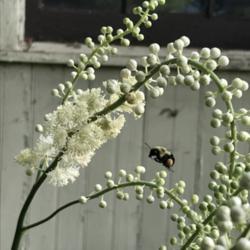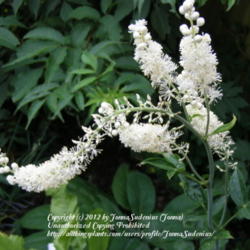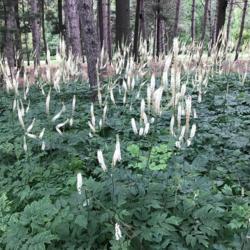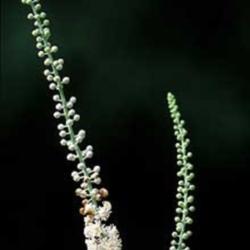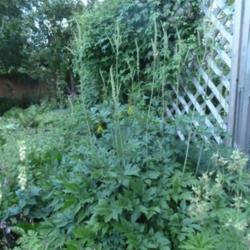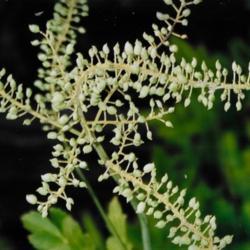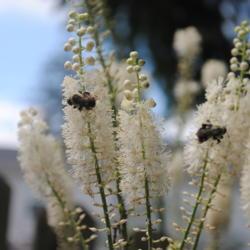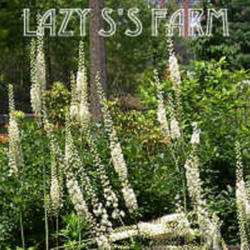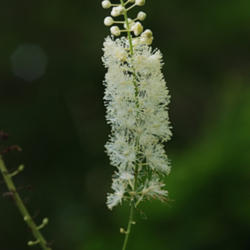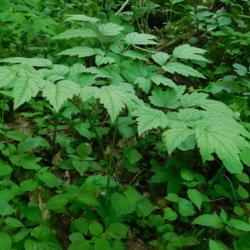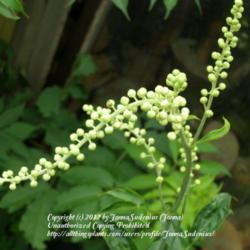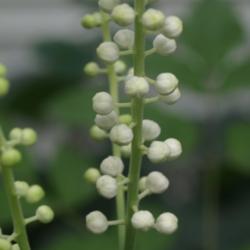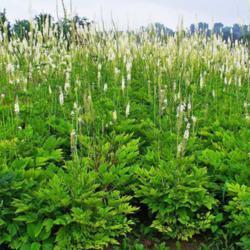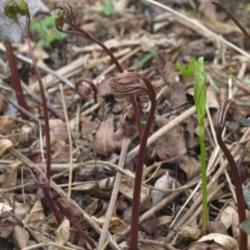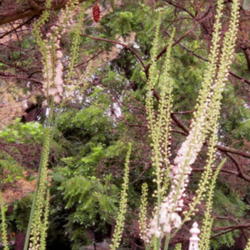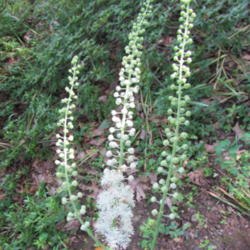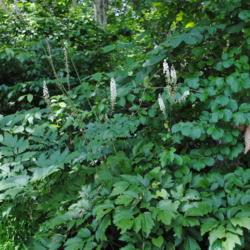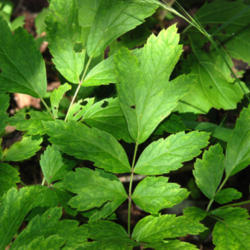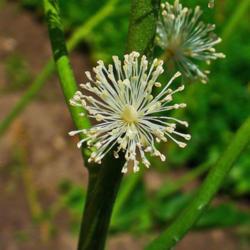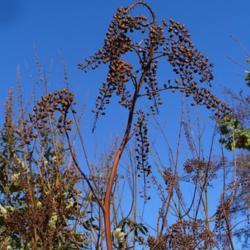Posted by
ILPARW (southeast Pennsylvania - Zone 6b) on Feb 16, 2018 8:46 PM concerning plant:
Black Bugbane is a wonderful, lovely, tall perennial for rich, moist soils in part shade, though it can tolerate full sun with moist soil. It is best to keep it out of strong winds, but to have some shelter. It grows in woods from Wisconsin through southern Ontario down to Missouri and northern Georgia. I've seen some patches of it in the wild in some woods in southeast Pennsylvania. It is one of those perennials that never need resetting and dividing, though one can divide it in spring or fall if wanted. The flowers smell so good and experience a number of bees and pollinators. Some are sold by a good number of conventional nurseries and by many native plant nurseries; however, it is only occasionally found in gardens and landscapes and is unknown by many, too bad! It should be used much more.
Posted by
mellielong (Lutz, Florida - Zone 9b) on Apr 17, 2015 8:34 PM concerning plant:
The book, "How to Know the Wildflowers" (1922) by Mrs William Starr Dana uses the Latin name Cimicifuga racemosa which is now a synonym. She states that the Latin genus name comes from the words "cimex" meaning a bug, and "fugare" meaning to drive away. That explains its common name of Bugbane. She also uses the common names Black Cohosh and Black Snakeroot. She states that the flowers are supposed to have such an unpleasant odor that even the insects avoid them. She also says that the Indians believed the plant to be effective against snake bites.
Posted by
Permastake (Toronto Ontario Canada - Zone 4b) on Oct 9, 2021 1:01 PM concerning plant:
Planted Cimicifuga racemosa and Cimicifuga racemosa 'Atropurpurea' in a sunny spot and they did really well. Surprised me when I discovered they were shade loving.
Posted by
cottelpg (Hamilton, Ohio - Zone 6a) on Jul 8, 2016 3:50 PM concerning plant:
This is a beautiful plant for the back of a shade perennial border. One common name is fairy candles and it lives up to this name as the white spikes look like a candelabra shining in woodland shade. The display begins to be attractive when the plant is in bud and continues as the flowers open from the bottom of the spike moving up. The astilbe-like foliage is attractive after bloom. The plant is highly deer resistant. It likes an organic acid soil. I have experienced no disease or insect problems. I like the native species much better than the hybrids,
Posted by
SongofJoy (Clarksville, TN - Zone 6b) on Jan 14, 2012 9:46 AM concerning plant:
This plant is found growing in cool places with good rich soil. Black cohosh (known as both Actaea racemosa and Cimicifuga racemosa), a member of the buttercup family, is a perennial plant that is native to North America. Other common names include black snakeroot, bugbane, bugwort, rattleroot, rattletop, rattleweed, and macrotys. Insects avoid it, which accounts for some of these common names.
Posted by
Sharon (Calvert City, KY - Zone 7a) on Jan 14, 2012 12:32 PM concerning plant:
We called it snakeroot where I grew up in the mountains of SE Kentucky. It was considered by older folks to be a medicinal plant.
It's a plant of the buttercup family (Ranunculaceae), native to eastern North America from south of Ontario to central Georgia, and west to Missouri and Arkansas. Black cohosh grows in a variety of woodland habitats. The roots and rhizomes of black cohosh have long been used medicinally by Native Americans. Extracts from these plant materials are thought to possess analgesic, sedative, and anti-inflammatory properties. Today, black cohosh preparations (tinctures or tablets of dried materials, and often the dried roots themselves,) are used mainly to treat symptoms associated with menopause, though early on it was used for a variety of other ailments.

